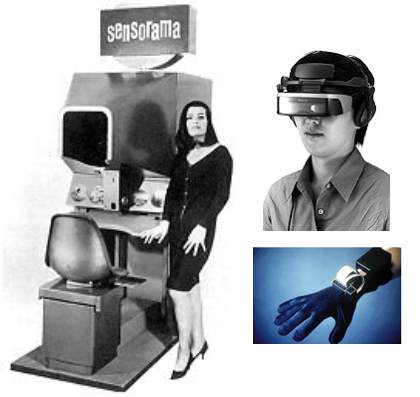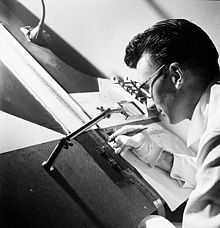
from their website:
1981
At a Chicago tradeshow, Xerox unveils the 8010 STAR Information System. PARC's Alto personal workstation is the foundation for this product. The 8010's features include all of the Alto's capabilities plus multilingual software, the Mesa programming language, and interim file servers. The system allows users to create complex documents by combining computing, text editing and graphics, and to access file servers and printers around the world through simple point-and-click actions, a functionality that has yet to be matched by today's computing systems.
1980
Optimem is spun out to commercialize non-erasable magneto-optical storage device technologies originally developed to enable high-speed access of information for the Alto. Optimem later becomes Cipher Data Products.
The Xerox 8000 network system, which allows the assembly of an integrated office network in which users can electronically create, process, file, print and distribute information, is released. The system uses PARC's Cedar file system and Interim File System (IFS), Ethernet and electronic mail technologies.
The Xerox 5700 laser printer system is released. The printer combines, into one unit, copying capability with several PARC innovations: acousto-optic modulation, word processing, electronic mail, and remote computer printing via Ethernet.
The Interpress page description language (PDL), that allows workstations to communicate with multiple printers, is completed.
Xerox, Intel and Digital Equipment Corporation jointly issue a formal specification for Ethernet, making it publicly available for a nominal licensing fee. Ethernet will become the global standard for interconnecting computers on local-area networks.
Software copyright for the Smalltalk-80 object-oriented programming language is filed. It is one of only three software copyrights existing at the time. The language is licensed to universities and commercial institutions. Smalltalk is the first object-oriented programming language with an integrated user interface, overlapping windows, integrated documents, and cut & paste editor. Smalltalk will later be commercialized when Xerox spins out ParcPlace Systems.
1979
Linguistic technology to enable spell checkers, a Thesaurus and reverse dictionary applications is developed. It will be employed in the future Xerox Memorywriter typewriters and 8010 STAR Information System
Xerox's Office Products Division announces that all future Xerox products will communicate through Ethernet.
Nearly 1,000 Alto personal workstations have been built and are in use throughout Xerox, linked by Ethernet local area networks (LANs) and gateways. Another 500 are in use in universities and government offices.
Late 1970s
The Network Architecture IFS "interim file server" code is completed. Along with the development of Ethernet, Alto and research prototypes of networking protocols for distributed computing, this leads to the development of XNS, Xerox's robust, leading-edge networking protocol. This technology will be incorporated in the future Xerox 8010 STAR Information System.
1978
A "worm" program, the term used for a computer program that searches out other computer hosts, then copies itself and self destructs after a programmed interval, is invented by two PARC researchers.
The Dorado, a high-performance personal computer, and Notetaker, a suitcase-sized machine that will become the forerunner of portable computers, are completed.
1977
The Xerox 5400, the first Xerox copier/duplicator with a built-in diagnostic microcomputer, is released. The machine connects to the Ethernet to enable computer-to-computer communications using protocols invented at PARC.
The Xerox 9700 Electronic Printing System, the first xerographic laser printer product, is released. The 9700, a direct descendent from the original PARC "EARS" printer which pioneered in laser scanning optics, character generation electronics, and page-formatting software, is the first product on the market to be enabled by PARC research. Electronic printing enables seamlessly transferring digital documents into the paper domain, and changes the entire notion of documents and document processing. Xerox's laser xerographic printing business will reach $1billion per year by 1986.
A PARC Lab Manager and her colleague begin drafting the "Introduction to VLSI Systems" textbook. The book is written and typeset on PARC's desktop publishing system. Very large scale integration (VLSI) integrated circuit design will provide greater computing power in more compact machines, lead to a new generation of computer-aided design (CAD) tools and reduced design time, and make dramatic improvements in system functions.
1976
Personal distributed computing, client/server architecture, and laser printing is commercialized in Alto personal workstation probes at the White House and universities.
The Dover-Alto software character generation laser raster output scanner (ROS) prototype printer is developed. Electronic printing on laser printers will provide a means of seamlessly transferring digital documents into the paper domain.
1975
PARC's current site at 3333 Coyote Hill Road in Palo Alto, California is completed in February at a size of 100,000 square feet; the doors officially open on March 1.
Engineers demonstrate a graphical user interface for a personal computer, including icons and the first use of pop-up menus. This interface will be incorporated in future Xerox workstations and greatly influence the development of Windows and Macintosh interfaces.
1974
The first distributed feedback (solid state) laser using gallium arsenide (GaAs), a material of considerable electronic interest, is demonstrated. This work will later result in a joint venture between Xerox and Spectra Physics to manufacture high-power solid-state lasers.
A software document architecture that enables device-dependent aspects of imaging to be cleanly separated from generic imaging operations is designed. This printer-independent interface leads to Page Description Languages (PDLs) that enable the construction of documents from higher-level sources. They are the intermediaries between tools for creating documents and devices for displaying them. Press, the first PDL, is developed by PARC scientists and greatly influenced the design of Interpress and Postscript.
The Bravo word-processing program is completed, and work on Gypsy, the first bitmap What-You-See-Is-What-You-Get (WYSIWYG) cut & paste editor, begins. Bravo and Gypsy programs together represent the world's first user-friendly computer word-processing system.
BITBlt, an algorithm that enables programmers to manipulate images very rapidly without using special hardware, is invented. The computer command enables the quick manipulation of the pixels of an image and will make possible the development of such computer interfaces as overlapping screen windows and pop-up menus.
1973
Ground breaking for PARC's current site at 3333 Coyote Hill Road in Palo Alto, California begins in August.
The Superpaint frame buffer records and stores its first video image: its inventor holding a sign that reads "It works, sort of." The frame buffer enables faster processing of memory intensive animation and graphics for the anticipated advanced graphical user interface of the Alto. A decade later, Xerox and its inventor will win an Emmy award for the technology.
The first laser printer, called EARS (for Ethernet-Alto research character generator scanning laser output terminal) is in service, printing documents at 1 page/second at 384 spots per inch (spi). It will be the foundation for the Xerox 9700 Electronic Printing System and Xerox's printing business.
A patent memo describing a new networking system uses the term "Ethernet" for the first time. A few months later, an entry about Ethernet in a researcher's lab notebook reads: "It works!" This new protocol for multiple computers communicating over a single cable will spawn a series of sophisticated networking protocols enabling distributed computing and re-architecting of the internal computer-to-computer communication within Xerox copiers and duplicators. Ethernet will become a global standard for interconnecting computers on local-area networks.
The Alto personal computer becomes operational. As it evolves, the Alto will feature the world's first What-You-See-Is-What-You-Get (WYSIWYG) editor, a commercial mouse for input, a graphical user interface (GUI), and bit-mapped display, and will offer menus and icons, link to a local area network and store files simultaneously. The Alto will provide the foundation for Xerox's STAR 8010 Information System.
Client/server architecture is invented. This development makes the paradigm shift of moving the computer industry away from the hierarchical world of centralized mainframes - that download to dumb terminals - towards more distributed access to information resources.
Personal distributed computing is invented. PARC's vision of computers as tools that could help people work together will change the course of the computer industry and lead to new ways of organizing interactions to support both individual and collaborative work.
1972
Full electronic character generation is demonstrated with laser raster output scanner (ROS) xerography. Electronic printing on laser printers will provide a means of seamlessly transferring digital documents into the paper domain.
The first version of Smalltalk is deployed. Smalltalk is the first object-oriented programming language with an integrated user interface, overlapping windows, integrated documents, and cut & paste editor. The concept that objects are described and addressed individually, and can be linked together with other objects without having to rewrite an entire program, will revolutionize the software industry. Smalltalk will later heavily influence C++ and Java programming systems.
1971
The concept of modulating a laser to create an electronic image on a copier's drum becomes reality when the world's first laser computer printer demonstrates artificially generated laser raster output scanner (ROS) xerography at 500 spots per inch (spi). This will become the basis of Xerox's xerographic printing business that will later generate $1 billion per year.
1970
Xerox Corporation gathers together a team of world-class researchers in information sciences and physical sciences and gives them the mission to create "the architecture of information." The Xerox Palo Alto Research Center (PARC) officially opens its doors at 3180 Porter Drive in Palo Alto, California on July 1, 1970.







 http://tixo.org/node/3
http://tixo.org/node/3


